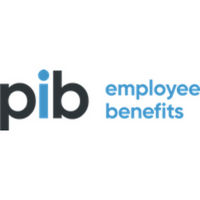3 key considerations when creating a wellbeing strategy to engage a global workforce
With employees spread across numerous countries, or even the world, it can be difficult for global organisations to ensure all of its employees feel part of the same team.
A well-executed employee wellbeing strategy can be key to engagement within a global organisation, helping to tie employees into an organisation’s values and purpose and showing they are valued as part of the wider company.
The age demographic of workforces is changing, as companies benefit from having the most experienced workers who typically fall into the higher age categories. However, employers are struggling with talent shortages and use incentives such as wellbeing packages to retain them.
Growth in wellbeing support
The UK has seen a significant increase in the number of organisations offering wellbeing support in the form of employee assistance programmes, private medical insurance, and voluntary benefits such as discounted gym memberships and cycle to work schemes. This trend is starting to spread globally, as organisations see employee wellbeing in a new light after the Covid-19 pandemic.
While the number of organisations offering wellbeing support is increasing, a truly successful global approach to employee wellbeing is one that actively engages employees with their own wellbeing, their colleagues, and the organisation. Employees with access to a wide range of health and risk protection are more engaged at work.
The pandemic has driven a need for benefits platforms which help to connect people and this has also triggered a shift in what is most highly valued, with a growing change in attitudes towards the use of digital wellbeing and self-care solutions.
Digital health has and can play a clear role in alleviating the mental health crisis through the use of video chats and tools to build mindfulness and resilience skills, key components of engaging a global workforce through their wellbeing solution.
Here are some key considerations when constructing a global wellbeing strategy which benefits and engages employees.
1. Understand cultural differences
It’s important to have a clear understanding of the cultural differences within the areas or countries your organisation covers and how these may affect attitudes to wellbeing. For example, in the UK there has been a change in the way mental health is thought about, while in other parts of the world such as in Asia mental health is much less widely discussed and needs to be approached differently.
2. Accessibility
While it may seem obvious that global wellbeing services need to be communicated in different languages, this can sometimes be more complicated than it initially seems, for example where there are ex-pats in multiple countries. It may be that even within a single country, communications need to be in available in numerous languages. If the support available is not communicated in a language accessible to that employee, they are more likely to be disengaged from their benefits and even the organisation.
Another key consideration is the accessibility of the services. Both access to local healthcare and economic disparities can affect the accessibility of wellbeing support. The World Health Organisation says that half the world still lacks access to essential health services, a statistic made worse by the global pandemic.
Where access isn’t readily available, support through global private medical insurance and other services can be essential in ensuring the health and wellbeing of a workforce and aid recruitment.
Wellbeing schemes can also connect employees with existing services in their region. But in countries where the framework of services is either patchy or non-existent, employees could fall through the gaps. To ensure global equity and accessibility to the right wellbeing support, you need to know where these gaps are and how to plug them.
Wellbeing and digital services can also be used to flag tools and benefits which are relevant to employees and have the potential to serve as a connection between individuals and providers in emergencies such as natural disasters where support is key to an employee’s wellbeing.
3. Inclusivity
There is a growing recognition of the role which inclusivity has to play in overall wellbeing. An organisation cannot hope to provide the right support for their employees without recognising each person’s unique circumstances and experiences which contribute towards their wellbeing. This is particularly relevant when looking at international wellbeing, as there could be additional socio-economic or political factors to consider such as poverty, racial inequality, or LGBTQ+ rights.
To summarise, the key point is that a ‘one size fits all’ approach won’t work when constructing an employee benefits scheme. Although the level of support for employees should be universal, the types of benefits and how they are communicated should be tailored.
Wellbeing is key to the success not only of an ex-pat assignment but to also ensure that all employees within a multi-national company feel nurtured, supported, remain engaged and continue to feel connected.
Wellbeing is now not just a nice thing to do but the right thing to do.
Supplied by REBA Associate Member, PIB Employee Benefits
PIB Employee Benefits is a forward-thinking consulting business.








